On the Use of NB-IoT over GEO Satellite Systems with Time-Packed Optical Feeder Links for Over-the-Air Firmware/Software Updates of Machine-Type Terminals
Abstract
1. Introduction
2. System Model
2.1. NB-IoT Signal Format for the Satellite Forward Link
2.2. Architectures for Forwarding NB-IoT Frames over a Satellite Relaying Node
2.2.1. Case 1: Detect-and-Forward Relaying of NB-IoT Frames
2.2.2. Case 2: Decode-and-Forward Relaying of NB-IoT Frames
2.2.3. Case 3: Detect-and-Forward Relaying of NB-IoT Frames Encapsulated in DVB-S2(X)
2.3. Equalization of the Time-Packed Signal
2.4. Computation of the LLRs for the 4-PAM and the QPSK Modulation Schemes
3. Optical Wireless Satellite Channel Model
3.1. Atmospheric Power Losses: Absorption and Scattering Modeling
3.2. Atmospheric Turbulence: Beam Wander, Beam Spreading, and Beam Scintillation
4. Evaluation
4.1. Simulation Setup of the Optical Channel
4.2. Simulation Setup of NB-IoT Signal
- Case 1: NB-IoT detect-and-forward (See Section 2.2.1).
- Case 2: NB-IoT decode-and-forward (See Section 2.2.2).
- Case 3: NB-IoT encapsulated in DVB-S2(X) frames. (See Section 2.2.3).
4.3. Definition of the Figures of Merit
4.4. Simulation Results
- Evaluation of the end-to-end BLER and throughput when the / of the feeder link varies from 2 to 22 dB in steps of 1 dB (see Figure 9), the SNR of the access link is 20 dB, the wind speed is 21 m/s, and the NB-IoT code rates are , , and . There is no time-packing (%) and configuration is Case 1 (Detect-and-Forward NB-IoT). The throughput of Figure 9 is the of (34);
- Evaluation of the end-to-end BLER and throughput when the / of the access link varies from to 12 dB in steps of 1 dB (see Figure 10), the SNR of the feeder link is 15, 20, and 25 dB, the wind speed is , 21, and 30 m/s, and the NB-IoT code rates are , and . There is no time-packing (%) and the tested configuration is Case 1 (Detect-and-Forward NB-IoT). The throughput of Figure 10 is of (34);
- Evaluation of the throughput for Case 1 (see Figure 11): Detect-and-Forward NB-IoT when the SNR of the feeder link is 15 dB, the of the access varies from to 12 dB, and the code rates of the NB-IoT and overlapping factors are as defined in Section 4.2. The throughput of Figure 11 corresponds to of (34);
- Evaluation of the throughput for Case 2 (see Figure 12): Decode-and-Forward NB-IoT when the SNR of the feeder link is 15 dB, the SNR of the access varies from 0 to 20 dB, and the code rates of the NB-IoT and overlapping factors are as defined in Section 4.2. The throughput of Figure 12 corresponds to of (34);
- Evaluation of the throughput for Case 3 (see Figure 13): Detect-and-Forward NB-IoT encapsulated in DVB-S2(X) frames when the SNR of the feeder link is 15 dB, the SNR of the access varies from 0 to 20 dB, and the code rates of the DVB-S2(X) and NB-IoT and overlapping factors are defined as in Section 4.2. The throughput of Figure 13 corresponds to of (34);
- Evaluation of the envelope of the throughput when the overlapping factor remains constant for all cases under study (see Figure 14a–c) when the SNR of the feeder link is 15 dB, the SNR of the access varies from 0 to 20 dB, and the code rates of the DVB-S2(X)/NB-IoT frames and the overlapping factors are defined in Section 4.2. The throughput of these figures corresponds to of (35);
- Comparison among the envelope of the throughput for all cases under study (see Figure 15a–d) in terms of the overlapping factor , when the SNR of feeder link is 15 dB, the SNR of the access link varies from 0 to 20 dB, and the code rates of the DVB-S2(X)/NB-IoT frames and overlapping factors are defined as in Section 4.2. The throughput of these figures corresponds to of (35);
5. Conclusions and Futures Extensions
5.1. Concluding Remarks
5.2. Future Extensions
Author Contributions
Funding
Institutional Review Board Statement
Informed Consent Statement
Acknowledgments
Conflicts of Interest
Abbreviations
| BLER | BLock Error Rate |
| DVB-S2 | Digital Video Broadcasting Second Generation Satellite |
| DVB-S2X | Digital Video Broadcasting Second Generation Extension |
| FSO | Free Space Optical |
| GEO | Geostationary Earth Orbit |
| HTS | High Throughput Satellites |
| IM/DD | Intensity Modulation / Decision Detection |
| MCS | Modulation and Coding Scheme |
| NOMA | Non Orthogonal Multiple Access |
| NPBCH | Narrowband Physical Broadcast Channel |
| NPDCCH | Narrowband Physical Downlink Control Channel |
| NPDSCH | Narrowband Physical Downlink Shared Channel |
| NPSS | Narrowband Primary Synchronization Signal |
| NSSS | Narrowband Secondary Synchronization Signal |
| NB-IoT | Narrow-Band Internet of Things |
| OFDM | Orthogonal Frequency Division Multiplexing |
| OTA | Over-The-Air |
| PAM | Pulse Amplitude Modulation |
| QPSK | Quadrature Pulse Shift Keying |
| THR | Throughput |
References
- Northern Sky Research. 10th report on M2M and IoT via Satellite. NSR. Available online: https://www.nsr.com (accessed on 24 March 2021).
- CISCO. CISCO Annual Internet Report White Paper. Available online: https://www.cisco.com/c/en/us/solutions/collateral/executive-perspectives/annual-internet-report/white-paper-c11-741490.html (accessed on 24 March 2021).
- 3GPP (3rd Generation Partnership Project); Technical Specification Group Radio Access Network. Study on New Radio (NR) to Support Non-terrestrial Networks (Release 15). Technical Report TR 38.811. Available online: https://portal.3gpp.org/desktopmodules/Specifications/SpecificationDetails.aspx?specificationId=3234 (accessed on 24 March 2021).
- Martinez-de-Rioja, D.; Martinez-de-Rioja, E.; Rodriguez-Vaqueiro, Y.; Encinar, J.A.; Pino, A. Multibeam Reflectarrays in Ka-Band for Efficient Antenna Farms Onboard Broadband Communication Satellites. Sensors 2021, 21, 207. [Google Scholar] [CrossRef] [PubMed]
- Montori, S.; Cacciamani, F.; Gatti, R.V.; Sorrentino, R.; Arista, G.; Tienda, C.; Encinar, J.A.; Toso, G. A Transportable Reflectarray Antenna for Satellite Ku-band Emergency Communications. IEEE Trans. Antennas Propag. 2015, 63, 1393–1407. [Google Scholar] [CrossRef]
- Mody, A.; Gonzalez, E. An Operator’s View: The Medium-Term Feasibility of an Optical Feeder Link for VHTS. In Proceedings of the 2017 IEEE International Conference on Space Optical Systems and Applications (ICSOS), Naha, Japan, 14–16 November 2017. [Google Scholar]
- Giordani, M.; Polese, M.; Mezzavilla, M.; Rangan, S.; Zorzi, M. Toward 6G networks: Use cases and technologies. IEEE Commun. Mag. 2020, 58, 55–61. [Google Scholar] [CrossRef]
- Zhang, Z.; Xiao, Y.; Ma, Z.; Xiao, M.; Ding, Z.; Lei, X.; Karagiannidis, G.K.; Fan, P. 6G wireless networks:Vision, requirements, architecture, and key technologies. IEEE Veh. Technol. Mag. 2019, 14, 28–41. [Google Scholar] [CrossRef]
- Björnson, E.; Larsson, E.G. How energy-efficient can a wireless communication system become? In Proceedings of the 2018 52nd Asilomar Conference on Signals, Systems, and Computers, Pacific Grove, CA, USA, 28–31 October 2018; pp. 1–5. [Google Scholar]
- VIASAT. 2020. Available online: https://www.viasat.com/products/high-capacity-satellites (accessed on 24 March 2021).
- Telesat. 2020. Available online: http://www.telesat.com/services/leo (accessed on 24 March 2021).
- Fuchs, C.; Giggenbach, D.; Calvo, R.M.; Rosenkranz, W. Transmitter Diversity With Phase-Division Applied to Optical GEO Feeder Links. IEEE Photonics Technol. Lett. 2021, 33, 541–544. [Google Scholar] [CrossRef]
- Chen, W.; Sun, J.; Hou, X.; Zhu, R.; Hou, P.; Yang, Y.; Gao, M.; Lei, L.; Xie, K.; Huang, M.; et al. 5.12 Gbps optical communication link between LEO satellite and ground station. In Proceedings of the 2017 IEEE International Conference on Space Optical Systems and Applications (ICSOS), Naha, Japan, 14–16 November 2017; pp. 260–263. [Google Scholar] [CrossRef]
- Toyoshima, M. Hybrid High-Throughput Satellite (HTS) Communication Systems using RF and Light-Wave Communications. In Proceedings of the 2019 IEEE Indian Conference on Antennas and Propagation (InCAP), Xi’an, China, 27–30 October 2019; pp. 1–4. [Google Scholar] [CrossRef]
- Angeletti, P.; Alagha, N.; D’Addio, S. Space/ground beamforming techniques for satellite communications. In Proceedings of the 2010 IEEE Antennas and Propagation Society International Symposium, Toronto, ON, Canada, 11–17 July 2010; pp. 1–4. [Google Scholar] [CrossRef]
- Wang, L.; Wu, Y.; Zhang, H.; Choi, S.; Leung, V.C.M. Resource Allocation for NOMA Based Space-Terrestrial Satellite Networks. IEEE Trans. Wirel. Commun. 2021, 20, 1065–1075. [Google Scholar] [CrossRef]
- Bi, R.; Yang, M.; Wang, G. Interference and Link Budget Analysis in Integrated Satellite and Terrestrial Mobile System. In Proceedings of the 2018 International Symposium on Networks, Computers and Communications (ISNCC), Rome, Italy, 19–21 June 2018; pp. 1–6. [Google Scholar] [CrossRef]
- Mazo, J. Faster-than-Nyquist signaling. Bell Syst. Tech. J. 1975, 54, 1451–1462. [Google Scholar] [CrossRef]
- Modenini, A. Advanced Transceivers for Spectrally Efficient Communications. Ph.D. Thesis, University of Parma, Parma, Italy, 2014. [Google Scholar]
- Bas, J.; Pérez-Neira, A. On the physical layer security of IoT devices over satellite. In Proceedings of the 2019 27th European Signal Processing Conference (EUSIPCO), A Coruna, Spain, 2–6 September 2019; pp. 1–5. [Google Scholar]
- IEEE Future Networks. 2021. Available online: https://futurenetworks.ieee.org (accessed on 24 March 2021).
- ESA. 2021. Available online: http://www.esa.int/ESA_Multimedia/Videos/2020/11/Moonlight_connecting_Earth_with_the_Moon (accessed on 24 March 2021).
- Mata-Calvo, R.; Giggenbach, D.; Le Pera, A.; Poliak, J.; Barrios, R.; Dimitrov, S. Optical feeder links for very high throughput satellites—System perspectives. In Proceedings of the Ka Broadband Communication, Navigation and Earth Observation Conference, Bologna, Italy, 12–14 October 2015; pp. 1–7. [Google Scholar]
- Dimitrov, S.; Matuz, B.; Liva, G.; Barrios, R.; Mata-Calvo, R.; Giggenbach, D. Digital modulation and coding for satellite optical feeder links. In Proceedings of the 2014 7th Advanced Satellite Multimedia Systems Conference and the 13th Signal Processing for Space Communications Workshop (ASMS/SPSC), Livorno, Italy, 8–10 September 2014; pp. 150–157. [Google Scholar]
- Dowhuszko, A.; Mengali, A.; Arapoglou, P.; Pérez-Neira, A. Total degradation of a DVB-S2 satellite system with analog transparent optical feeder link. In Proceedings of the 2019 IEEE Global Communications Conference (GLOBECOM), Big Island, HI, USA, 9–13 December 2019; pp. 1–6. [Google Scholar]
- Bas, J.; Dowhuszko, A. Time-Packing as Enabler of Optical Feeder Link Adaptation in High Throughput Satellite Systems. In Proceedings of the IEEE 5G World Forum (5GWF), Virtual Conference. 10–12 September 2020; pp. 186–192. [Google Scholar]
- Bas, J.; Dowhuszko, A. Linear Time-Packing Detectors for Optical Feeder Link in High Throughput Satellite Systems. In Proceedings of the Global Congress on Electrical Engineering (GC-ElecEng), Valencia, Spain, 4–6 September 2020; pp. 1–6. [Google Scholar]
- Bas, J.; Dowhuszko, A. End-to-end error control coding capability of NB-IoT transmissions in a GEO satellite system with time-packed optical feeder link. In Proceedings of the EAI International Conference on Industrial IoT Technologies and Applications, Online. 11 December 2020; pp. 1–20. [Google Scholar]
- 3GPP. LTE; Evolved Universal Terrestrial Radio Access (E-UTRA); Physical Channels and Modulation (3GPP TS 36.211 Version 16.4.0 Release 16). Technical Report TS 36.211. Available online: https://www.etsi.org/deliver/etsi_ts/136200_136299/136211/16.04.00_60/ts_136211v160400p.pdf (accessed on 24 March 2021).
- 3GPP. Technical Specification Group Radio Access Network; Evolved Universal Terrestrial Radio Access (E-UTRA); Physical Layer Procedures; Technical Report TS 36.213. Available online: http://www.arib.or.jp/english/html/overview/doc/STD-T104v3_00/5_Appendix/Rel12/36/36213-c50.pdf (accessed on 24 March 2021).
- 3GPP. Technical Specification Group Radio Access Network; Evolved Universal Terrestrial Radio Access (E-UTRA); Multiplexing and Channel Coding; Technical Report TS 36.212. Available online: https://www.etsi.org/deliver/etsi_ts/136200_136299/136212/08.07.00_60/ts_136212v080700p.pdf (accessed on 24 March 2021).
- 3GPP. LTE; Evolved Universal Terrestrial Radio Access (E-UTRA) and Evolved Universal Terrestrial Radio Access Network (E-UTRAN); Overall description; Stage 2; Technical Report TS 36.300. Available online: https://www.etsi.org/deliver/etsi_ts/136300_136399/136300/14.03.00_60/ts_136300v140300p.pdf (accessed on 24 March 2021).
- ETSI. Digital Video Broadcasting. Second Generation Framing Structure, Channel Coding and Modulation Systems for Broadcasting, Interactive Services, News Gathering and Other Broadband Satellite Applications; Part 2: DVB-S2 Extensions (DVB-S2X). Available online: https://www.etsi.org/deliver/etsi_en/302300_302399/302307/01.02.01_40/en_302307v010201o.pdf (accessed on 24 March 2021).
- Forney, G. Maximum-likelihood sequence estimation of digital sequences in the presence of intersymbol interference. IEEE Trans. Inform. Theory 1972, 18, 363–378. [Google Scholar] [CrossRef]
- Viterbi, A. Error bounds for convolutional codes and an asymptotically optimum decoding algorithm. IEEE Trans. Inform. Theory 1967, 13, 260–269. [Google Scholar] [CrossRef]
- Hailu, S.; Dowhuszko, A.; Tirkkonen, O. Adaptive co-primary shared access between co-located radio access networks. In Proceedings of the 2014 9th International Conference on Cognitive Radio Oriented Wireless Networks and Communications (CROWNCOM), Oulu, Finland, 2–4 June 2014; pp. 131–135. [Google Scholar]
- Kaushal, H.; Kaddoum, G. Optical Communication in Space: Challenges and Mitigation Techniques. IEEE Commun. Surv. Tut. 2017, 19, 57–96. [Google Scholar] [CrossRef]
- Rouissat, M.; Borsali, A.; Chikh-Bled, M. Free space optical channel characterization and modeling with focus on algeria weather conditions. Int. J. Comput. Netw. Inform. Secur. 2012, 4, 17–23. [Google Scholar] [CrossRef]
- Willebrand, H.; Ghuman, B. Free Space Optics: Enabling Optical Connectivity in Today’s Networks; Sams: St. Indianapolis, IN, USA, 2001. [Google Scholar]
- Mahalati, R.N.; Kahn, J.M. Effect of fog on free-space optical links employing imaging receivers. Opt. Express 2012, 20, 1649–1661. [Google Scholar] [CrossRef] [PubMed]
- Flecker, B.; Gebhart, M.; Leitgeb, E.; Muhammad, S.S.; Chlestil, C. Results of attenuation measurements for optical wireless channels under dense fog conditions regarding different wavelengths. In Atmospheric Optical Modeling, Measurement, and Simulation II; Hammel, S.M., Kohnle, A., Eds.; International Society for Optics and Photonics, SPIE: Bellingham, WA, USA, 2006; Volume 6303, pp. 232–242. [Google Scholar]
- Nadeem, F.; Javornik, T.; Leitgeb, E.; Kvicera, V.; Kandus, G. Continental Fog Attenuation Empirical Relationship from Measured Visibility Data. Radioengineering 2010, 19, 596–600. [Google Scholar]
- Vavoulas, A.; Sandalidis, H.G.; Varoutas, D. Weather effects on FSO network connectivity. IEEE OSA J. Opt. Commun. Netw. 2012, 4, 734–740. [Google Scholar] [CrossRef]
- Andrews, L.; Phillips, R. Laser Beam Propagation Through Random Media; SPIE Press: Bellingham, WA, USA, 2005. [Google Scholar]
- Andrews, L.C.; Phillips, R.L.; Sasiela, R.J.; Parenti, R.R. Strehl ratio and scintillation theory for uplink Gaussian-beam waves: Beam wander effects. Opt. Eng. 2006, 45, 1–12. [Google Scholar]
- Tyson, R.K.; Fraizer, B.W. Field Guide to Adaptive Optics; SPIE Field Guides; SPIE: Bellingham, WA, USA, 2012; Vol. FG24. [Google Scholar]
- Mengali, A. Optical Feeder Link Satellite Systems. Link Optimization in Future Generation Satellite Systems. Ph.D. Thesis, University of Luxembourg, Luxembourg, 2018; pp. 61–86, Chapter 4. [Google Scholar]
- Perlot, N.; Dreischer, T.; Weinert, C.; Perdigues, J. Optical GEO feeder link design. In Proceedings of the 2012 Future Network & Mobile Summit (FutureNetw), Berlin, Germany, 4–6 July 2012; pp. 1–8. [Google Scholar]
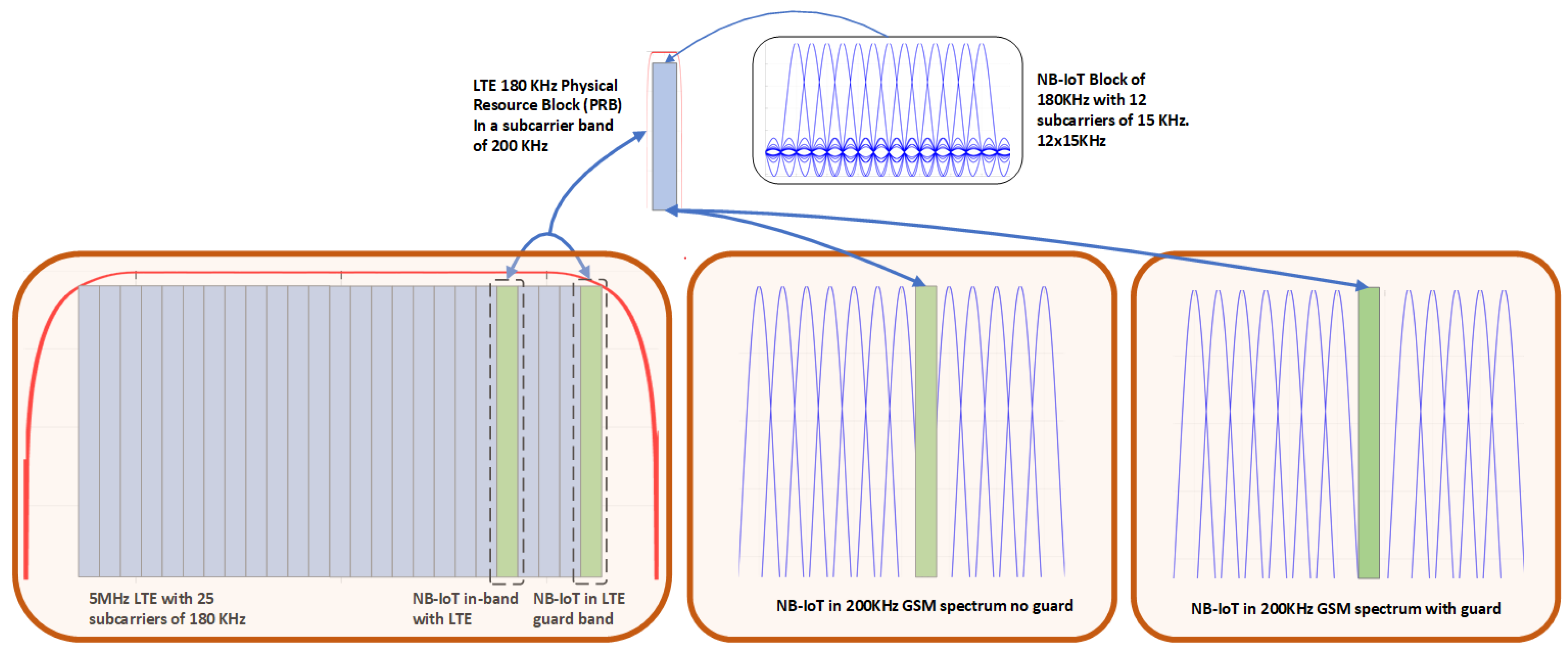

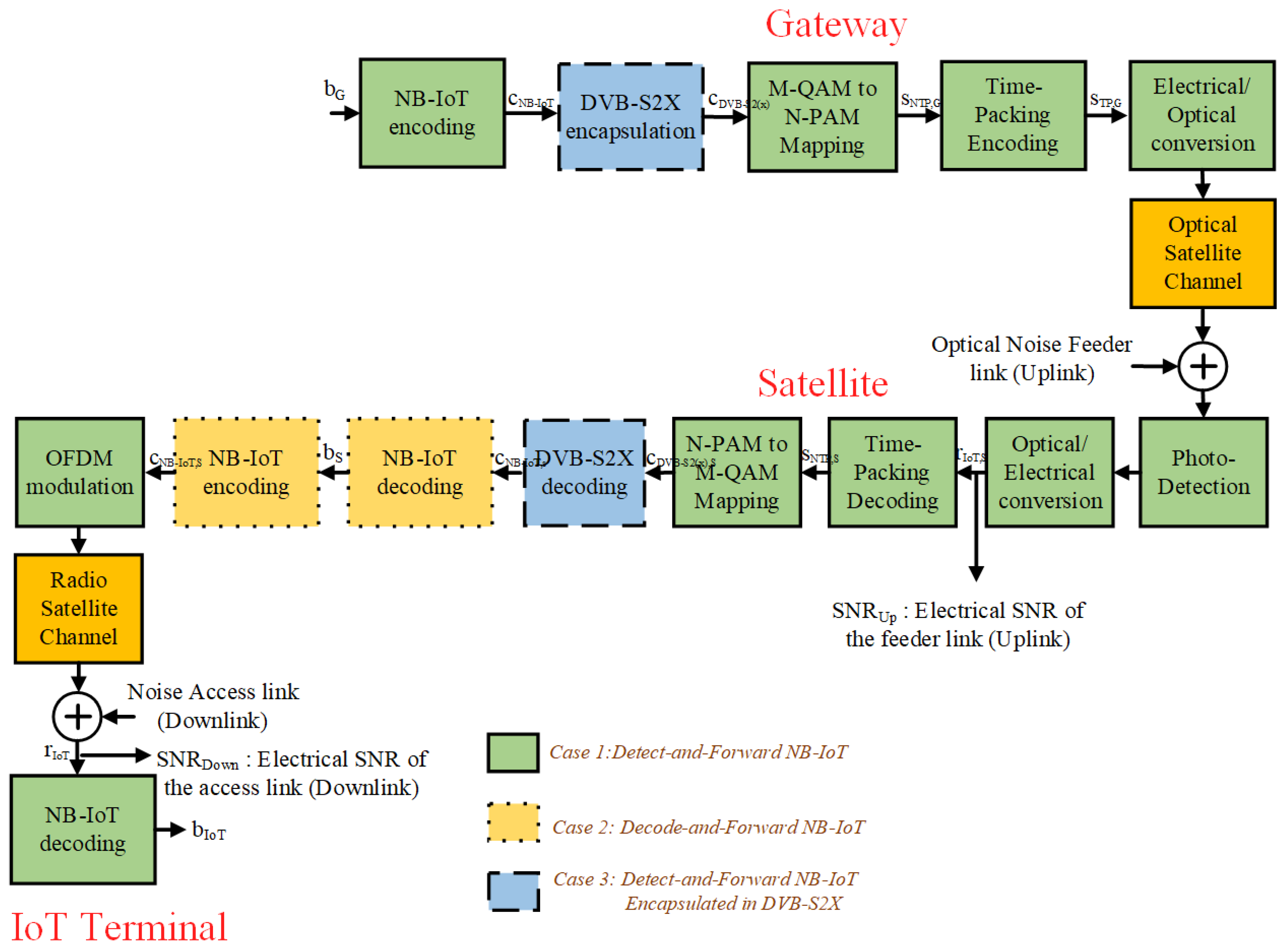
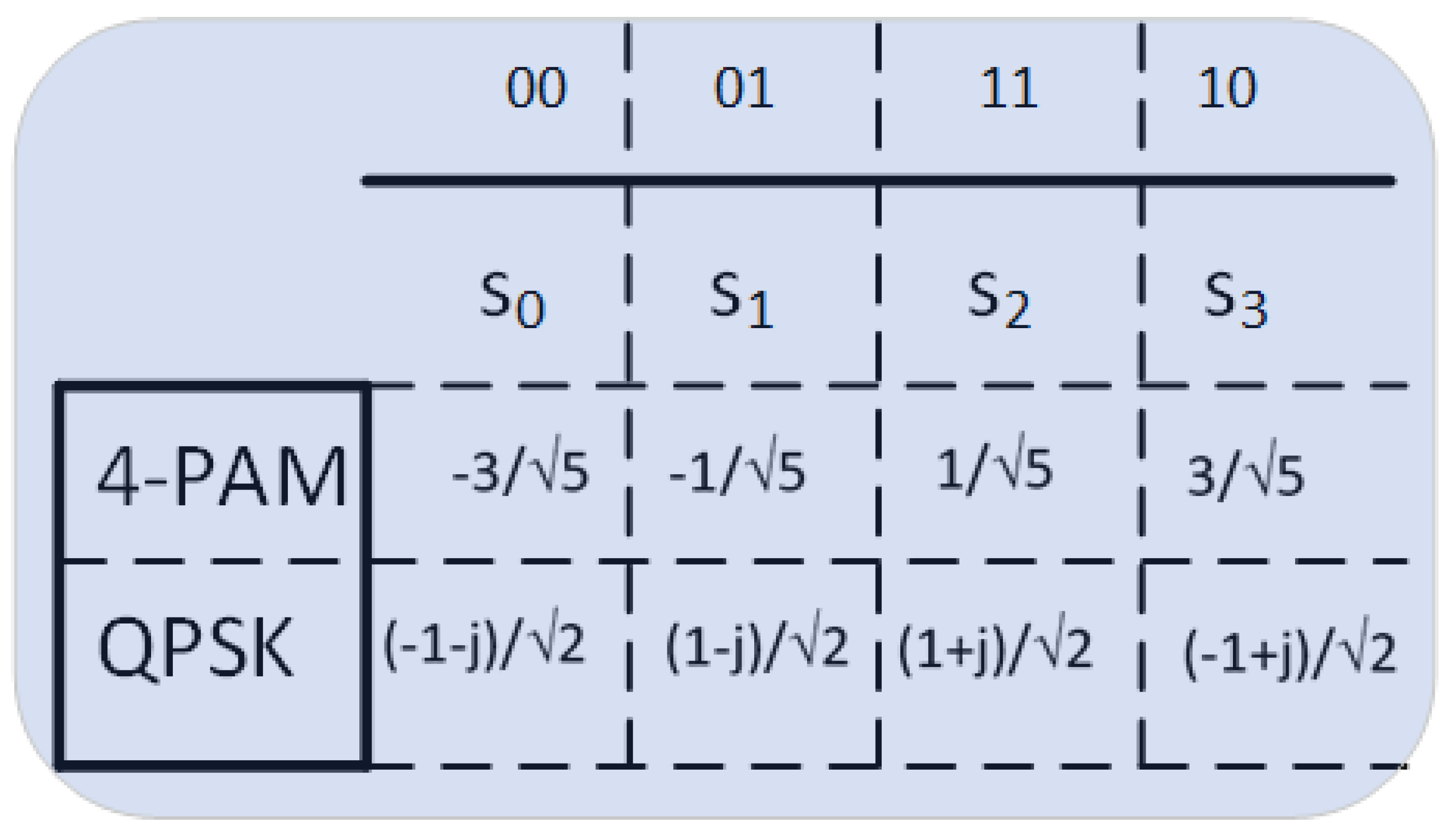
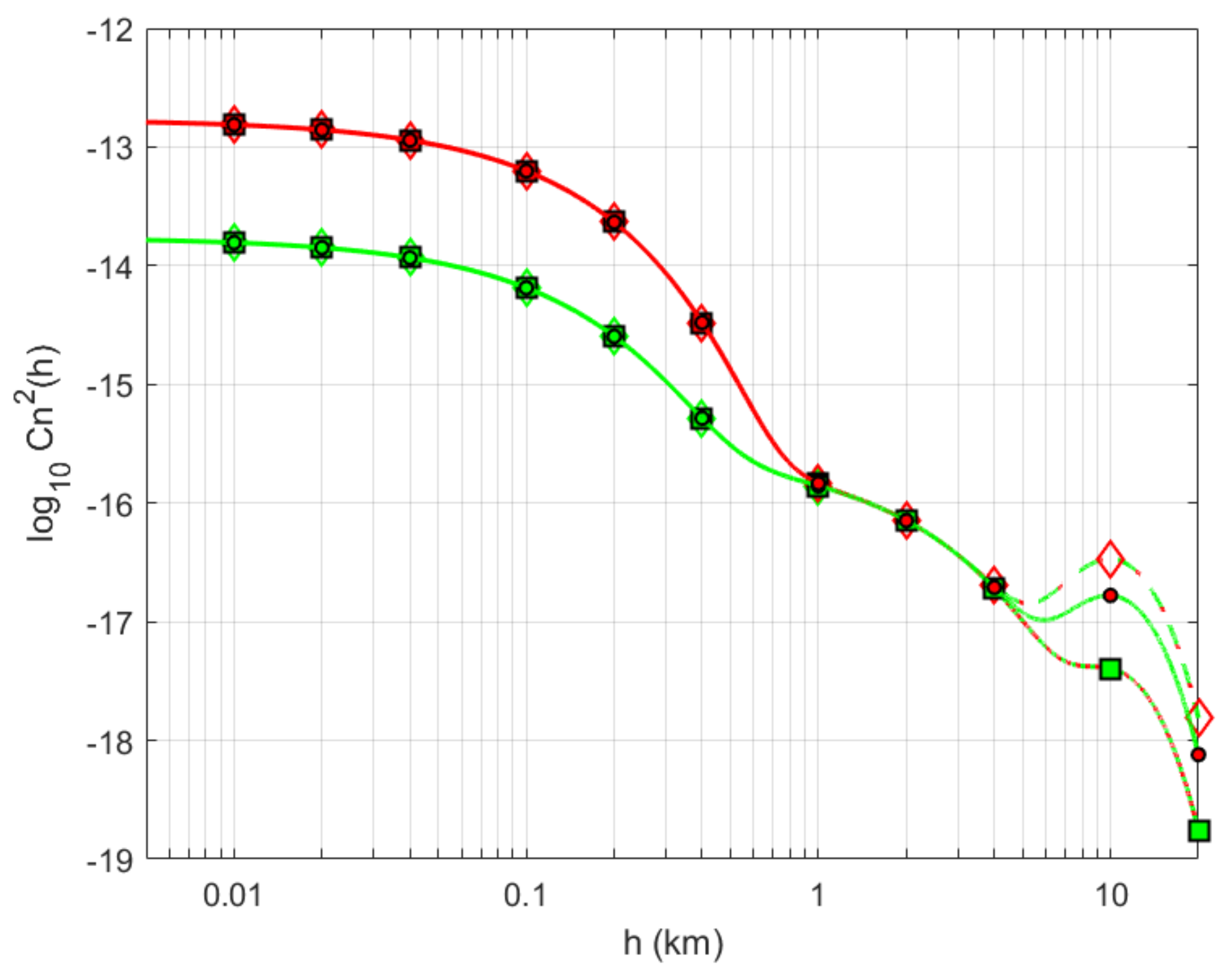
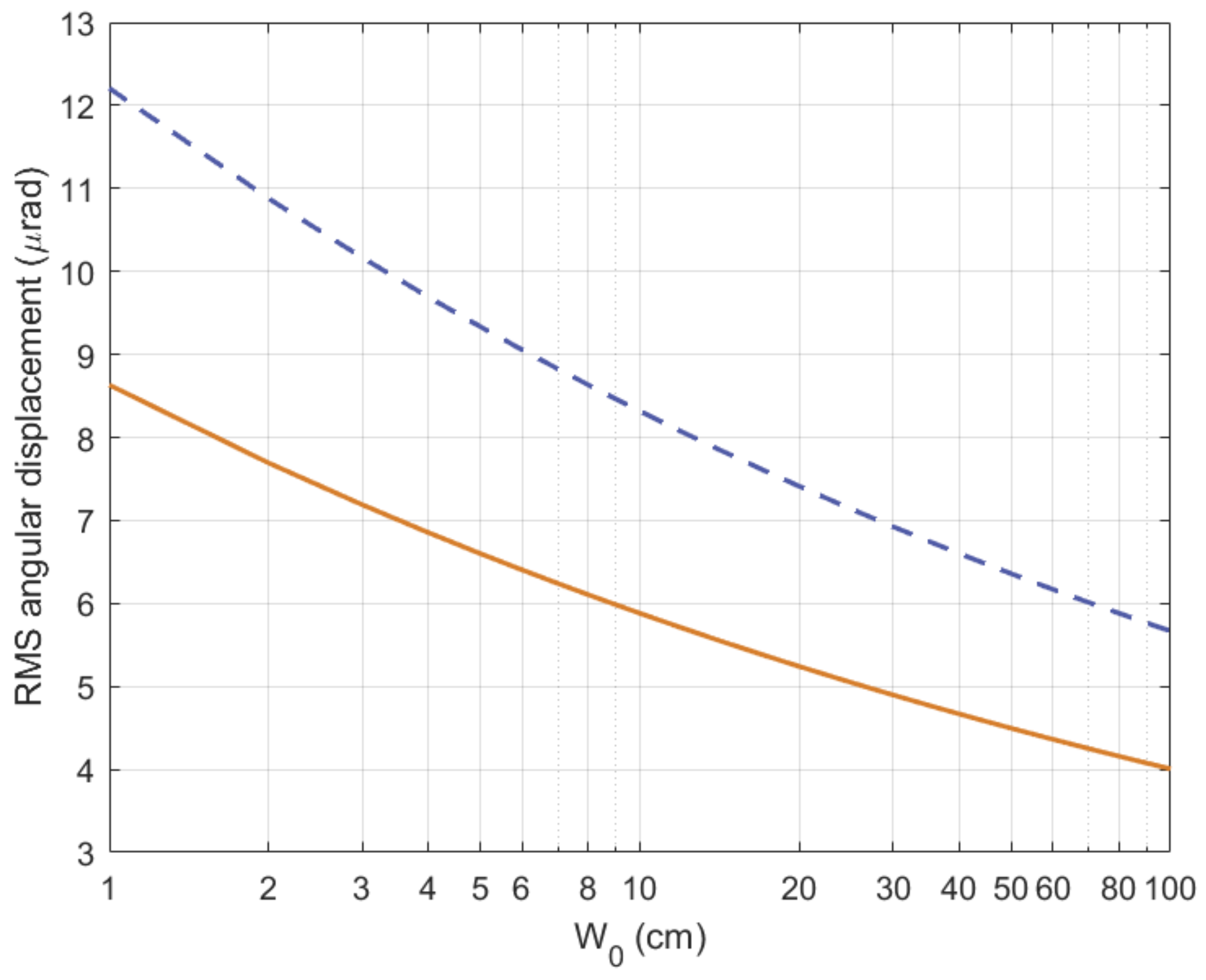

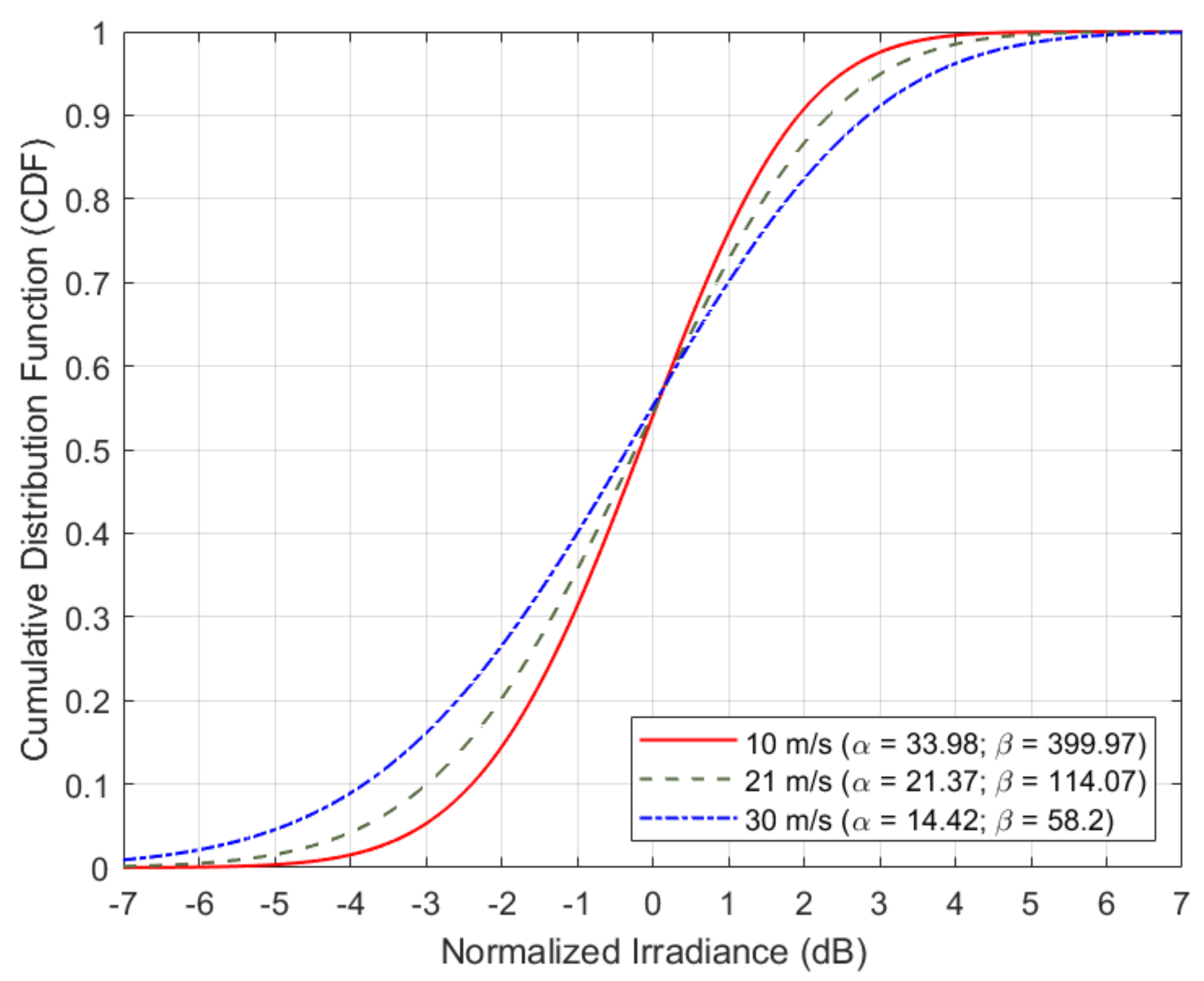
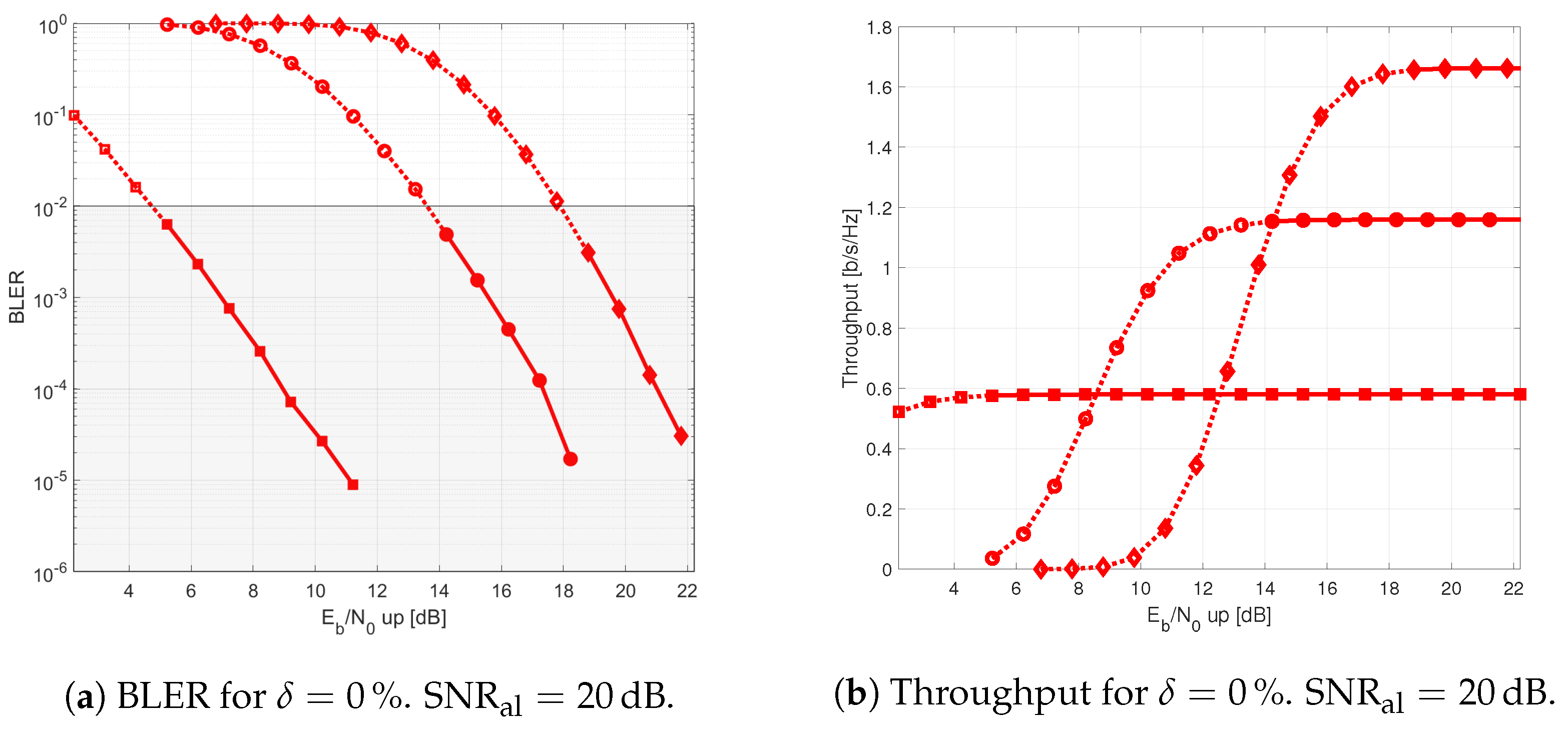
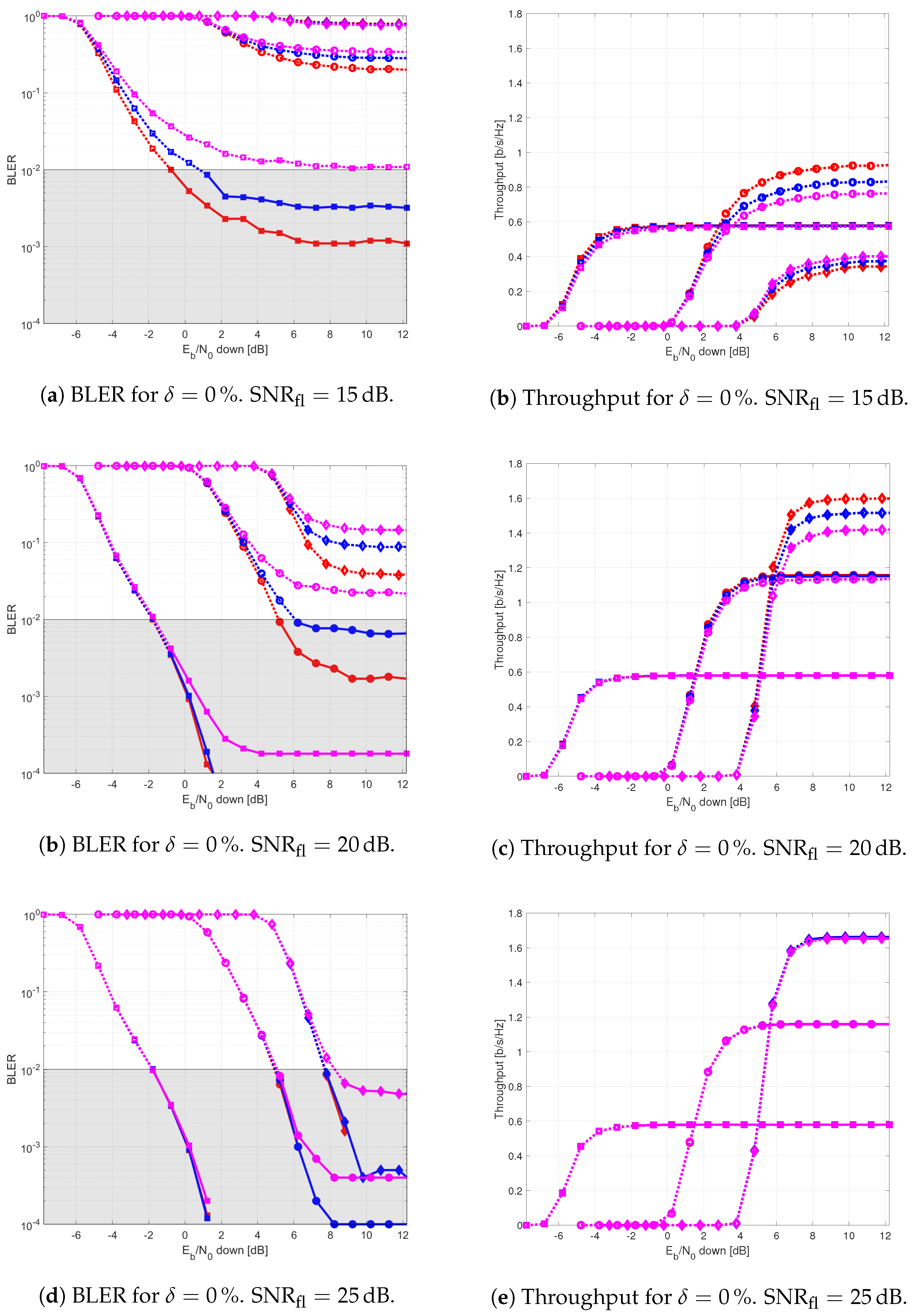
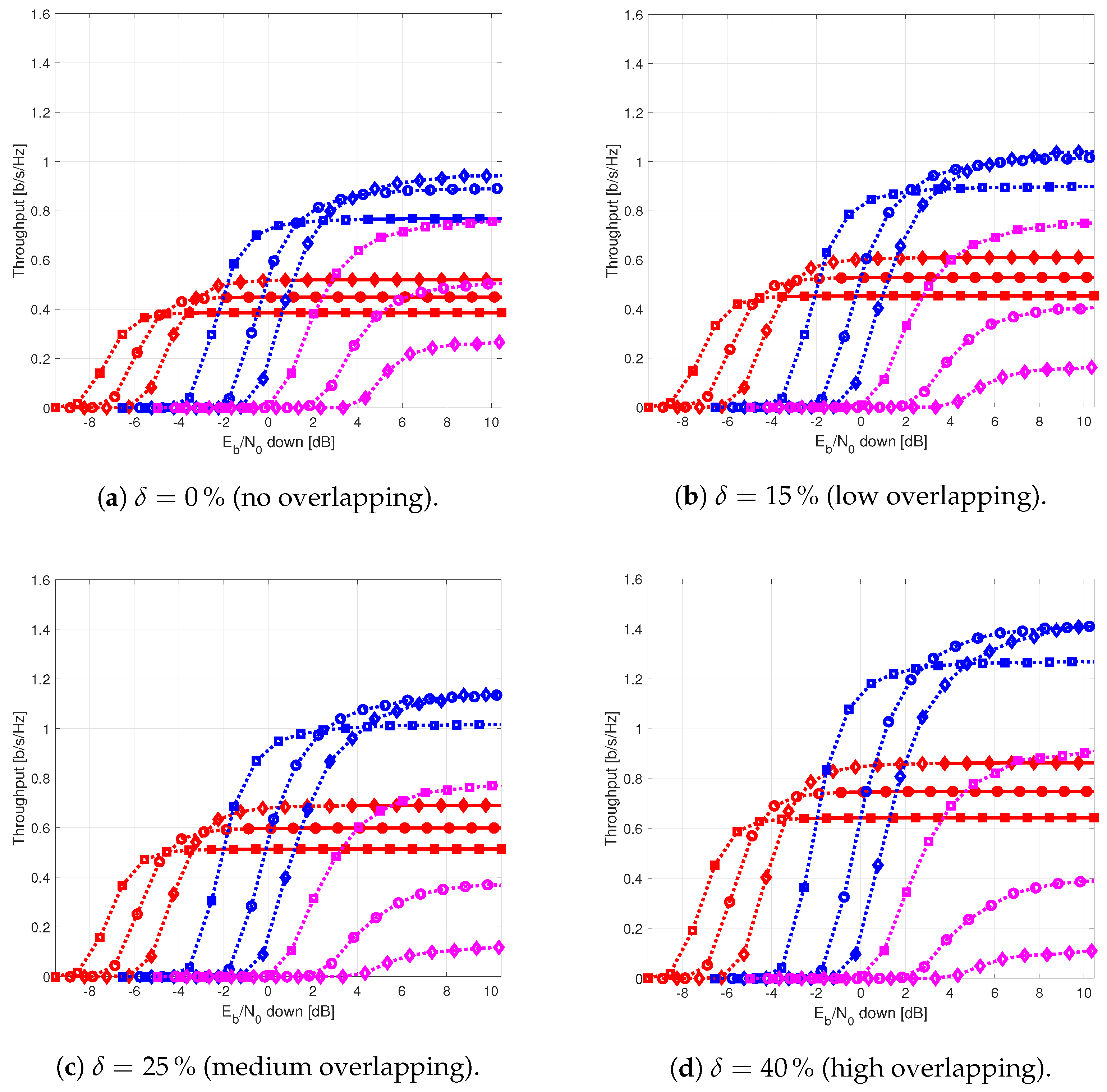
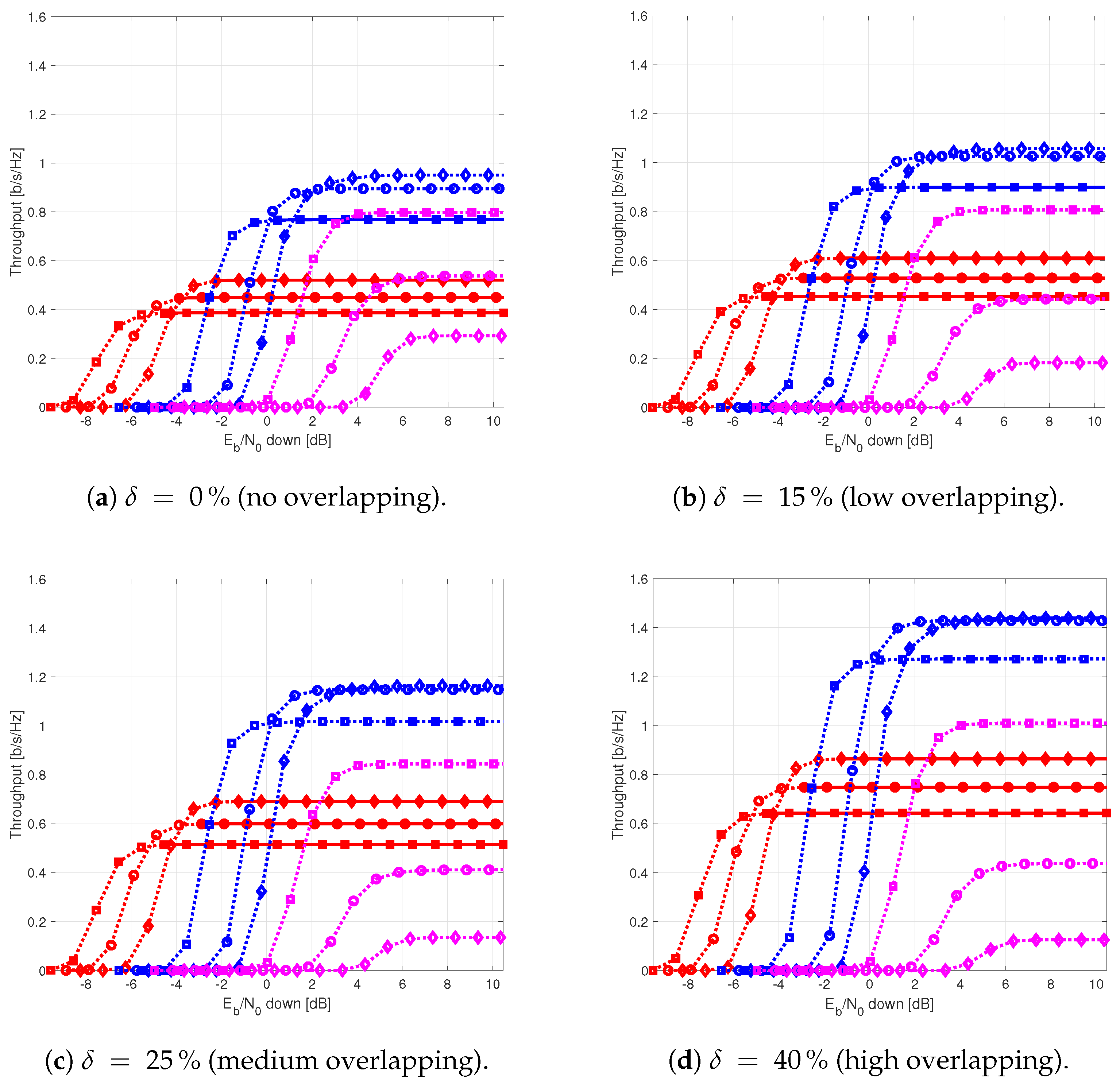
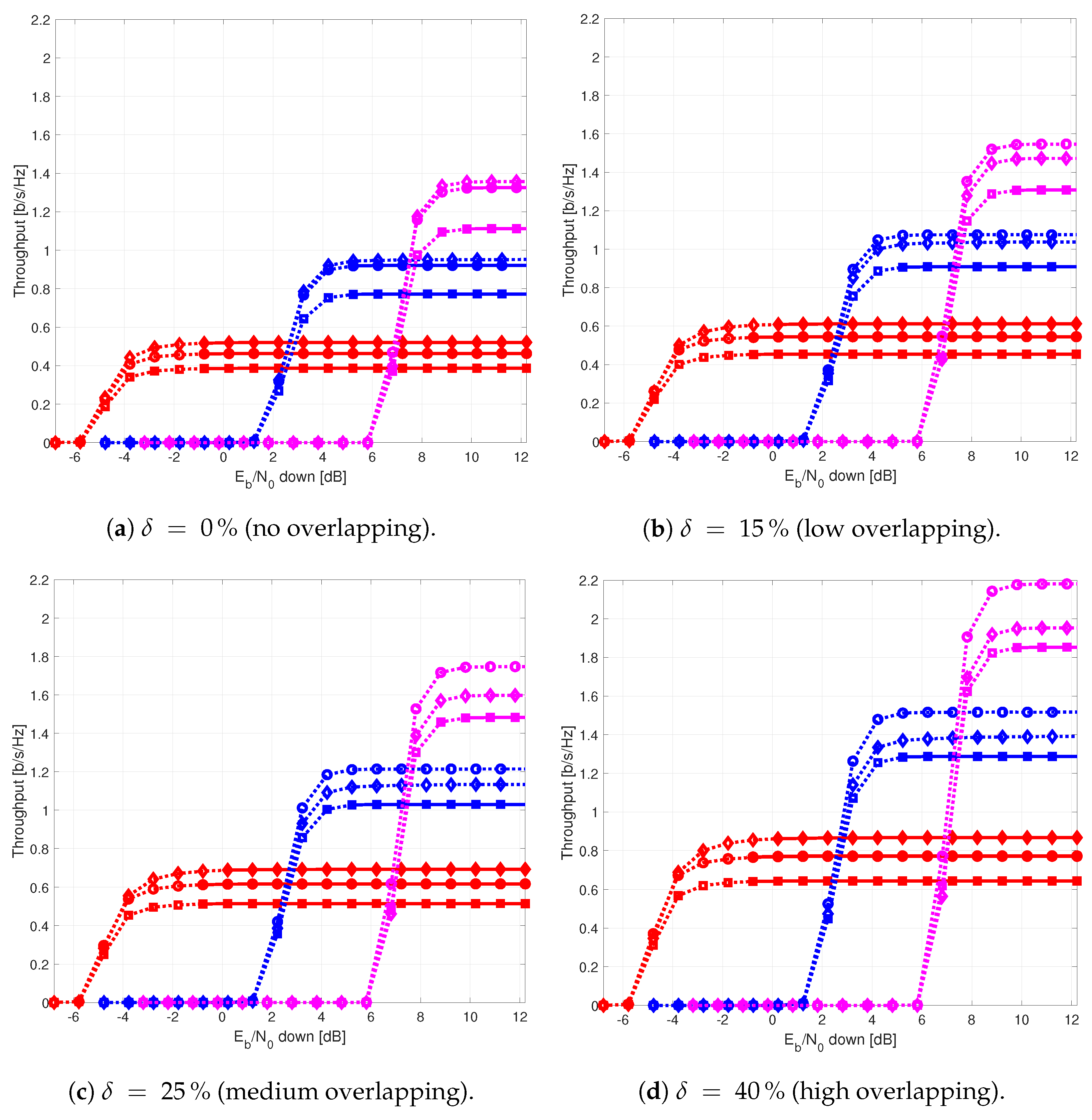


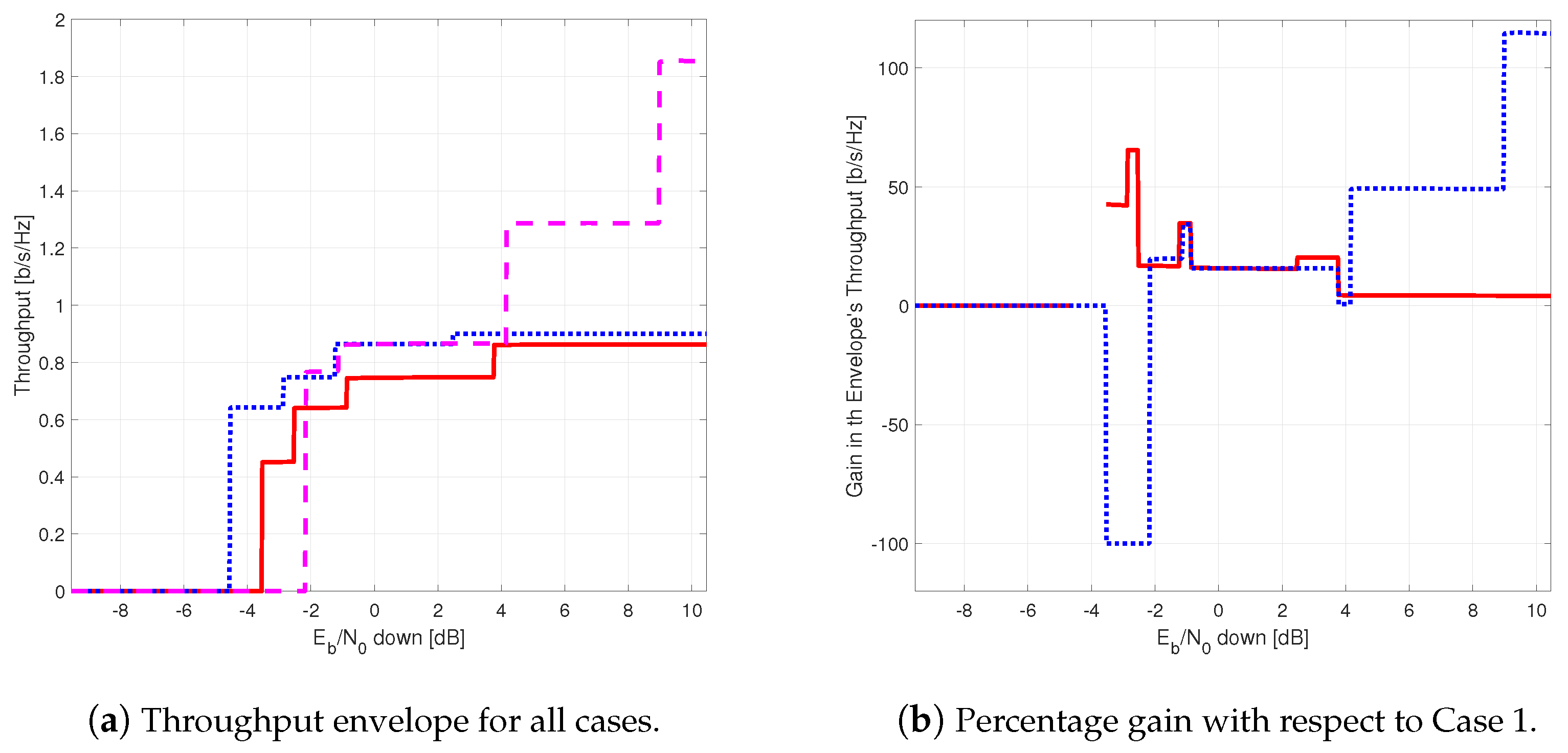

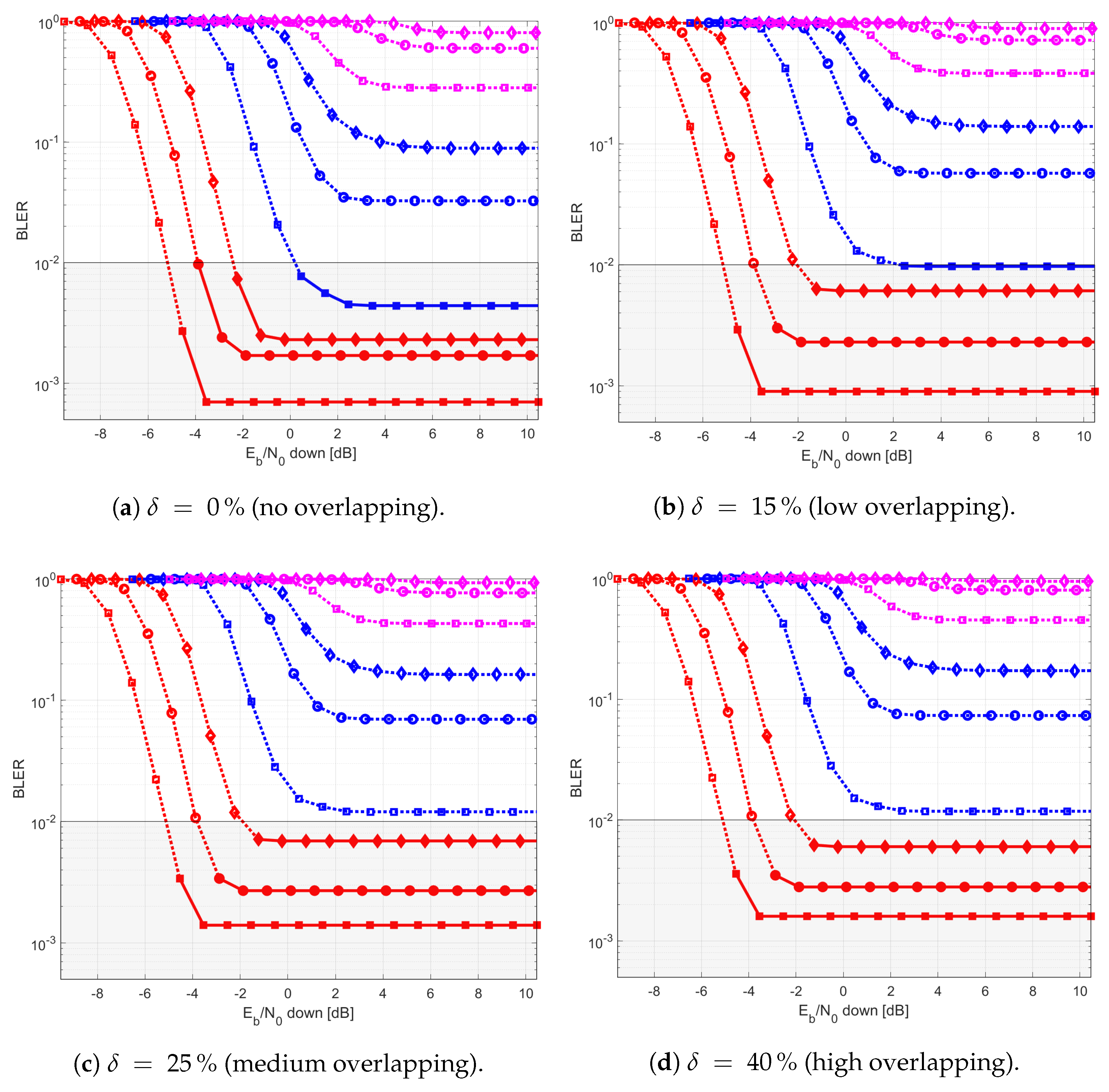
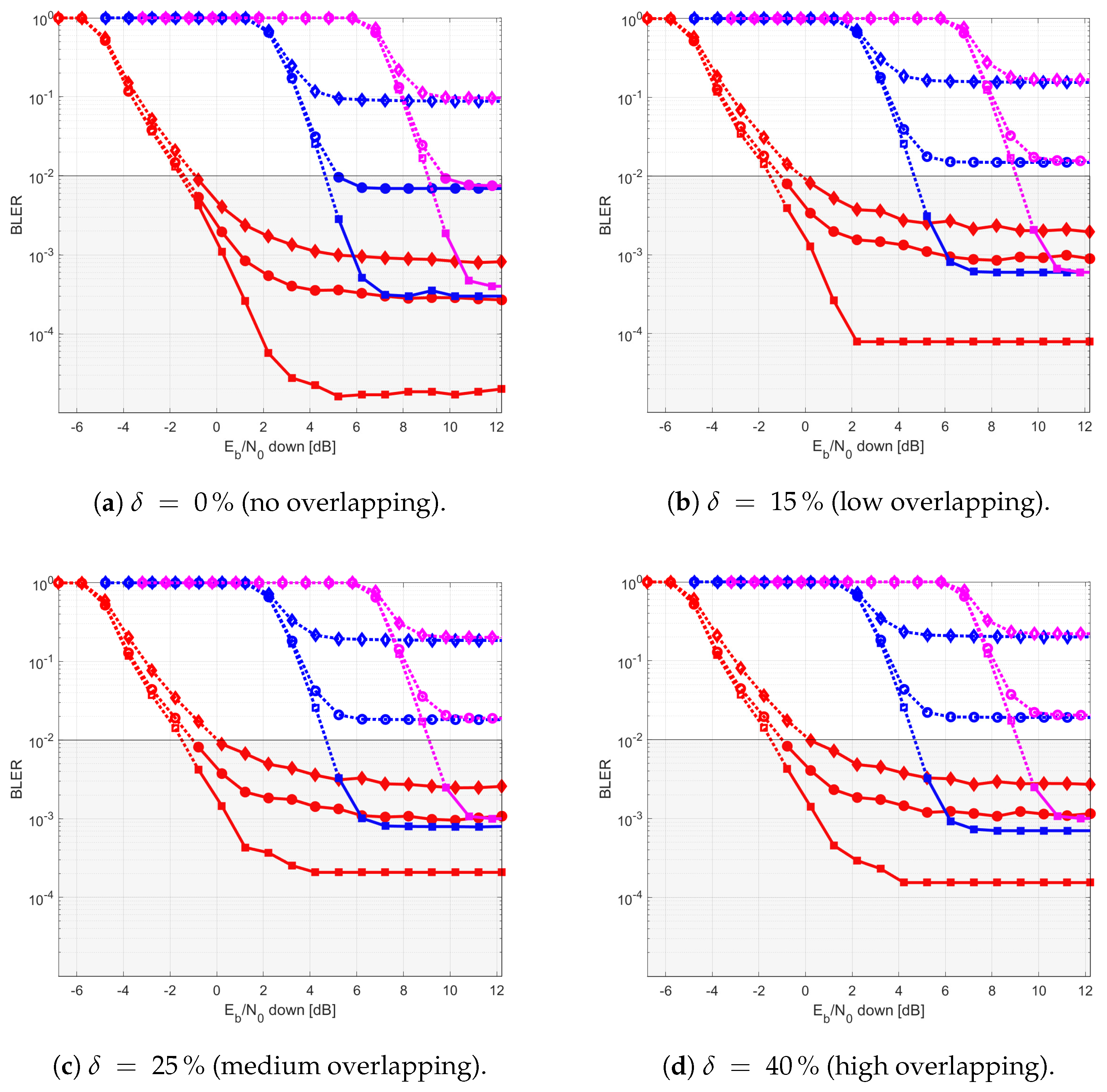
| 4-PAM | QPSK | |
|---|---|---|
| Symbol | Optical Link Parameter | Value | Unit |
|---|---|---|---|
| Optical power of LD (including EDFA booster) | dBm | ||
| Optical gain of transmitter (ground telescope) | dBi | ||
| Optical gain of receiver (satellite telescope) | dBi | ||
| Free space loss of optical link ( nm, H = 36,000 km) | dB | ||
| Atmospheric attenuation (absorption and scattering) | 0–10 | dB | |
| Beam spreading loss due to scintillation | dB | ||
| System losses in the optical feeder link | dB | ||
| Gain of the optical amplifier (EDFA) | dB | ||
| Responsivity of photodetector (PIN diode) | A/W | ||
| Bandwidth of electrical filter (PD output) | GHz | ||
| Bandwidth of optical channel ( nm) | GHz | ||
| PSD of amplified spontaneous emissions | W/Hz | ||
| PSD of RIN process (normalized) | −160 | dBc/Hz | |
| PSD of background noise at EDFA input | W/Hz | ||
| Electrical noise current spectral density | A | ||
| Dark current at the PIN diode output | A |
| 0.66667 | 0.33333 | 0.2222 | 0.2222 |
| 0.8 | 0.33333 | 0.2667 | 0.259 |
| 0.9 | 0.33333 | 0.3 | 0.3 |
| 0.66667 | 0.66667 | 0.4444 | 0.4444 |
| 0.8 | 0.66667 | 0.5333 | 0.5319 |
| 0.9 | 0.66667 | 0.6 | 0.6 |
| 0.66667 | 0.96 | 0.64 | 0.6386 |
| 0.8 | 0.96 | 0.768 | 0.7678 |
| 0.9 | 0.96 | 0.864 | 0.8628 |
| = 0% | = 15% | = 25% | = 40% | |
|---|---|---|---|---|
| 0.2222 | 0.3864 | 0.4546 | 0.5152 | 0.6441 |
| 0.2590 | 0.4504 | 0.5299 | 0.6006 | 0.7507 |
| 0.3000 | 0.5217 | 0.6138 | 0.6957 | 0.8696 |
| 0.4444 | 0.7729 | 0.9093 | 1.0305 | 1.2881 |
| 0.5319 | 0.9250 | 1.0883 | 1.2334 | 1.5417 |
| 0.6000 | 1.0435 | 1.2276 | 1.3913 | 1.7391 |
| 0.6386 | 1.1106 | 1.3066 | 1.4808 | 1.8510 |
| 0.7678 | 1.3353 | 1.5709 | 1.7804 | 2.2255 |
| 0.8628 | 1.5005 | 1.7653 | 2.0007 | 2.5009 |
Publisher’s Note: MDPI stays neutral with regard to jurisdictional claims in published maps and institutional affiliations. |
© 2021 by the authors. Licensee MDPI, Basel, Switzerland. This article is an open access article distributed under the terms and conditions of the Creative Commons Attribution (CC BY) license (https://creativecommons.org/licenses/by/4.0/).
Share and Cite
Bas, J.; Dowhuszko, A.A. On the Use of NB-IoT over GEO Satellite Systems with Time-Packed Optical Feeder Links for Over-the-Air Firmware/Software Updates of Machine-Type Terminals. Sensors 2021, 21, 3952. https://doi.org/10.3390/s21123952
Bas J, Dowhuszko AA. On the Use of NB-IoT over GEO Satellite Systems with Time-Packed Optical Feeder Links for Over-the-Air Firmware/Software Updates of Machine-Type Terminals. Sensors. 2021; 21(12):3952. https://doi.org/10.3390/s21123952
Chicago/Turabian StyleBas, Joan, and Alexis A. Dowhuszko. 2021. "On the Use of NB-IoT over GEO Satellite Systems with Time-Packed Optical Feeder Links for Over-the-Air Firmware/Software Updates of Machine-Type Terminals" Sensors 21, no. 12: 3952. https://doi.org/10.3390/s21123952
APA StyleBas, J., & Dowhuszko, A. A. (2021). On the Use of NB-IoT over GEO Satellite Systems with Time-Packed Optical Feeder Links for Over-the-Air Firmware/Software Updates of Machine-Type Terminals. Sensors, 21(12), 3952. https://doi.org/10.3390/s21123952






